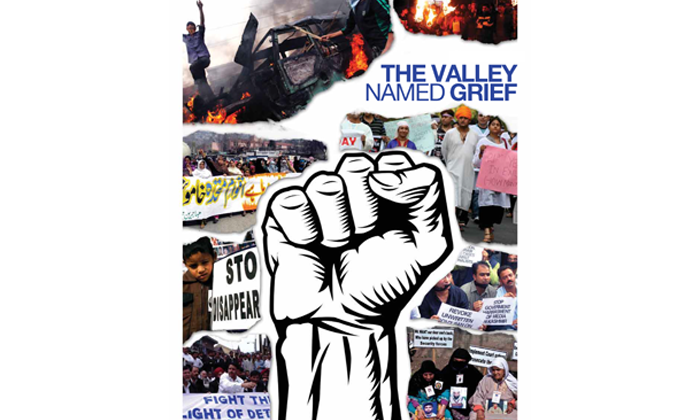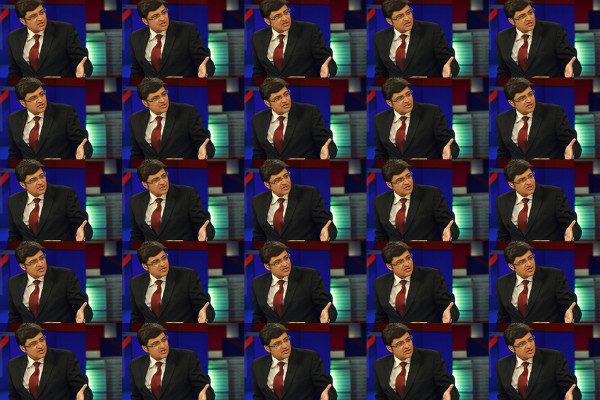For years now, activists of the Association of Disappeared Persons meet on the 10th of every month to stage a protest sit-in, in the heart of the city, a sprawling but neglected, Pratap Park, to continue their campaign of seeking the truth about their family members who disappeared in custody. This June, when they sat on an unusually sunny day, to face the media and their usual supporters, bang opposite, a group of activists from the Youth All India Kashmiri Samaj (YAIKS), an umbrella organization of displaced Kashmiri Pandits- seeking the implementation of Rehabilitation and Return policy for the Pandits and jobs as promised by the policy- were also protesting. Separated by two rows of hedges, flanking a narrow tiled path inside the park, the two groups sat opposite each other, well within eye contact, but at a distance that remained unbridgeable till they dispersed. And, yet there was a grief that unified both groups.
“The Press Enclave is a hub where most media offices are located and it witnesses protests or sit-ins over a range of issues – jobs, development, health-care, crime or human rights.”
Most of the Pandits, who were on dharna, had returned to the Valley after having been uprooted and homeless for 23 long years and were without a trace of bitterness against the local Kashmiri Muslims, who had been supportive in their ongoing struggle. The bitterness, if any, seemed to have mellowed down in that space. They confronted a new reality on their arrival – of sad faces weathered down by years of pain, sorrow and struggle of searching for their family members who went missing in custody of the security forces. Grief cannot be measured or competed, just felt and understood. Over the years, Pratap Park and its neighbouring Press Enclave have become havens for anybody who has a grievance. And they co-exist peacefully with passersby, leisure-seekers and day picnickers. It’s a free zone for anybody who has a cause to fight for, like Delhi’s Jantar Mantar. Interestingly, it seems as if these two enclosures have also been legitimised officially, as they are exceptional zones where the brutal repression of the local police and Central Reserve Police Force do not crush them, as happens elsewhere on the streets. The Press Enclave is a hub where most media offices are located and it witnesses protests or sit-ins over a range of issues – jobs, development, health-care, crime or human rights.
Other protests remain scattered, revealing the level of alienation or of grief. Some of them remain private, far away from the media glare. For instance, at the home of Riffat Andrabi, on the same day that the APDP and the young Kashmiri Pandits sat facing each other. As news of the suicide of the main accused in her husband, Jaleel Andrabi’s murder came, she and her family sat alone hounded by memories that have haunted them since 1996. Jaleel Andrabi, a human rights activist and a lawyer, was kidnapped by army personnel in March 1996. Two weeks later, his body was found in the Jhelum and Major Avtar Singh and several other army personnel were accused. During the initial years of the case, Avtar Singh found protection under the Armed Forces Special Powers Act and later, he quit the army and fled abroad. Two years back reports pointed out that he was hiding in California. In February 2011, when Avtar Singh was arrested by the police in Selma, California, for trying to strangle his wife, his whereabouts were finally confirmed but the Indian government, had been dragging its feet over the extradition of the former army officer, ever since. On 10th June, while APDP went about its routine sit-in, painfully explaining several cases of custodial disappearances that have never been investigated, to visiting media persons, news poured in of Avtar Singh gunning down three members of his family, injuring another and then committing suicide. For some, this may have been a case of poetic justice, but for Riffat, who has been fighting the case for more than one and a half decade, neither has grief ended, nor the battle. In fact, the California incident has only added to her woes. There are other accused in the case and Avtar Singh’s extradition and arrest could have expedited that. Secondly, the loss of his (Avtar’s) innocent family members saddens her more. “Atleast, their lives could have been saved if he had been extradited,” she said, remorsefully to the media.
Grief of loss is compounded by an institutional denial of justice and this is what binds many aggrieved to each other, though the efforts to build solidarities are scarce. One such occasion was observed the following day in the house of Tufail Matoo, the first innocent teenager to be killed during the 2010 summer of protest, vividly recalled by the sole eye-witness who grappled with the policeman in a vain bid to save Tufail’s life. A complete stranger to the boy till he was alive, she is now a regular visitor to Tufail Matoo’s house; her momentary act to save him binding her to his family. The Matoo house becomes a space for shared grief for Tufail’s mother, APDP’s Parveena Ahangar and firebrand separatist leader Asiya Andrabi, who despite her religious radicalism, has suffered the effects of prolonged incarceration – hers and her husband’s, ageing her with grief and pain beyond her years. They sit, cry and console each other. Parveena and Tufail’s family have found a great deal of solace in each other’s company, not only for their loss but also due to their bid to transform their victimhood into activism.
The journey of Tufail’s father and sister, Hafza, may have just begun two years ago. But Parveena has travelled a long road since her son disappeared in 1990 after he was picked up by some army officers. In the ensuing years, she found several other women during her visits to the courts and jails, all looking for a missing son, husband or brother. In 1994, she formed the Association of Parents of Disappeared Persons and from then on there is no looking back. She has been moving from village to village, convincing families affected by the pain of custodial disappearance to join the collective campaign, which goes beyond their fight for justice. It makes them comrades in grief, pain, suffering, problems and even their trivial joys. Such examples of a collective campaign are rare.
The conflict has thrown up several kinds of victims – murdered, displaced, raped, tortured and those detained for prolonged periods without any substantial cases. At one level, the pain is shared in the few common spaces that have become symbolic of grief. At another, the process of building solidarities between people- bound by grief- is still incomplete, even two decades after the armed conflict. Is it lethargy? Or is there a trust deficit? Whatever the reason, grief lingers, in small cubicles, often spilling into public places, but dwarfed by the semblance of normal, mundane life around.


